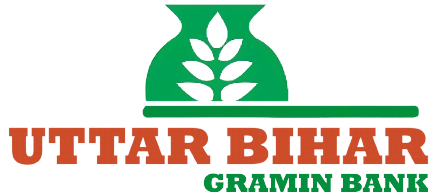The Bihar Gramin Bank Power Ride Loan is a two-wheeler finance product created only for women. It exists to remove common barriers women face when buying scooters and motorcycles: higher down payments, strict income proofs, lack of credit history, and safety concerns tied to mobility. Below I explain who can apply, what documents and account history matter, how much you can borrow, and the practical terms (margin, tenure, interest). I also cover student-specific rules and answer common questions with clear examples so you can decide quickly and confidently.
Who this is for
Eligible applicants: Women who are Indian residents and want to buy a two-wheeler for personal use, commuting to work or studies, or for small last-mile delivery work. The scheme targets women who have little or no formal credit history and those in semi-urban or rural Bihar looking for affordable mobility.
Why a women-only product? Banks design women-only loans to improve financial inclusion and economic participation. Women often lack collateral or steady salaried incomes. A dedicated product typically reduces paperwork, offers lower margins and flexible co-applicant rules, and includes features such as student support so more women can own transport safely.
Age & DL rules
Minimum and maximum age: Applicants should generally be between 18 and 60 years at the time of loan maturity. Younger applicants (18–21) may need a co-applicant or guardian, because many banks require an adult co-signer for legal reasons.
Driving licence: A valid driving licence (DL) is usually required if the vehicle will be ridden by the borrower immediately. For apprentices or buyers who intend to learn first, some branches accept a learner’s permit plus a declaration, but this varies. Why? A DL lowers the bank’s risk: it shows legal permission to operate the vehicle and reduces the chance of misuse that could increase default risk.
Account history notes
Bank account requirement: You will typically need a savings account, preferably with Bihar Gramin Bank, though the bank may accept other leading bank statements. The bank looks for 6 months of regular account activity. Regularity shows cash flow, which helps when salary slips or formal income documents are missing.
Why statements matter: For self-employed women or housewives, bank statements act as proof of income. A history showing regular deposits (income, remittances, or small business receipts) demonstrates repayment capacity even without formal salary slips.
Income criteria & proofs
Who qualifies: Salaried women, self-employed women, homemakers with a reliable co-applicant, and students with parental backing.
Acceptable proofs:
- Salaried: Last 3 months’ salary slips or Form 16 + 6 months’ bank statement showing salary credits.
- Self-employed: Last 6 months’ bank statements, business registration or shop proof, and Income Tax Returns (if filed).
- Homemakers: Documented cash flows in savings account plus a co-applicant’s income proof (spouse or parent).
- Students: Student ID and a co-applicant (parent/guardian) with income proof and bank statements.
Example: A woman running a tailoring unit can submit 6 months of bank statements showing regular customer deposits and a shop billing sheet. The bank uses these to estimate monthly cash inflows and set an affordable EMI.
Max loan amount
Typical cap: The loan amount commonly ranges up to ₹1.5 lakh for new two-wheelers, depending on the vehicle type and borrower profile. For standard scooters and motorcycles, most applicants get between ₹40,000 and ₹1,20,000.
Why it varies: The final amount depends on the vehicle’s on-road price, borrower’s income, existing liabilities, and LTV (loan-to-value) rules. The bank limits exposure based on affordability and resale value of the vehicle.
Margin
Down payment / margin: Bihar Gramin Bank often requires a margin of 10–20% of the vehicle price. For women borrowers, the margin can be lower (as low as 10%) to make the purchase easier.
Example: If the on-road price is ₹80,000 and margin required is 10%, you pay ₹8,000 upfront and the bank lends ₹72,000.
Why margin exists: Margin reduces the bank’s risk and ensures the borrower has some stake in the asset. A lower margin for women is an incentive to increase ownership while keeping bank risk manageable.
Tenure & repayment
Standard tenures: Tenors are usually 24 to 60 months (2–5 years). Shorter tenures reduce interest paid but require higher monthly EMIs. Longer tenures lower EMIs but increase total interest cost.
EMI example: For a ₹75,000 loan at 10% annual rate over 36 months, the EMI is about ₹2,420. This illustrates why banks check monthly cash flow carefully—your EMI should be a manageable portion of available income.
Repayment modes: EMIs can be auto-debited from the borrower’s savings account, collected via post-dated cheques, or deducted from salary if applicable. Auto-debit reduces missed payments and often offers a small rate advantage.
Interest rate
Typical range: Interest rates are linked to the bank’s lending rate and borrower profile. Expect a nominal range of roughly 8.5% to 12% per annum (indicative). Final rate depends on credit score, income stability, and any concessions for women borrowers.
Why it varies: Banks price risk. A high credit score and stable income get lower rates. Women-specific concessions may lower the rate to encourage uptake, but the exact rate will be quoted after basic verification.
Add-on conditions for students
- Co-applicant required: Students usually need a parent or guardian as a co-applicant who provides income proof and ID. This provides the bank a fallback for repayment.
- Lower margins or smaller limits: Loan amounts for students are often capped to cover small scooters and electric vehicles. This keeps EMIs affordable relative to parental income.
- Proof of enrollment: A valid college/university ID and address proof from the institution help the bank confirm the purpose (commuting to classes).
- Example: A 19-year-old female engineering student might get ₹50,000 with a parent co-applicant, 10% margin, and a 36-month tenor so monthly EMIs remain within parental budget.
FAQs
Q: Can the vehicle be used commercially (ride sharing or deliveries)?
A: Some banks allow commercial use but require additional documentation (business registration or commercial vehicle insurance). Commercial use increases wear and resale risk, so lending terms may be stricter.
Q: How long does processing take?
A: Typical processing is 3–7 working days after submission of complete documents. Faster if you have an account and stable income proof because verification is quicker.
Q: Is prepayment allowed?
A: Most rural banks allow partial or full prepayment. There may be a small prepayment fee depending on the loan contract. Ask the branch for the prepayment schedule before signing.
Q: What if I lose my job or face a short-term cash crunch?
A: Notify the bank immediately. Banks may offer a moratorium for a short period, restructure EMIs, or convert to interest-only payments. This depends on bank policy and requires documented proof of hardship.
Q: Can I apply without a driving licence?
A: Some branches accept a learner’s licence temporarily, but a valid DL will be required before final disbursement in many cases. Confirm with the branch early to avoid delays.
In short, the Power Ride Loan reduces upfront cost and documentation hurdles, while tailoring margin and tenor for women and students. The design aims to make two-wheeler ownership realistic and affordable, not just aspirational. If you want, I can list exact documents to carry to the branch or run a sample EMI schedule for a specific loan amount and interest rate.

Kritti Kumari is a banker and MBA graduate who writes about banking, finance, and customer-friendly services. She simplifies complex financial products into easy guides, helping readers understand Bihar Gramin Bank’s offerings and make smarter money decisions.

